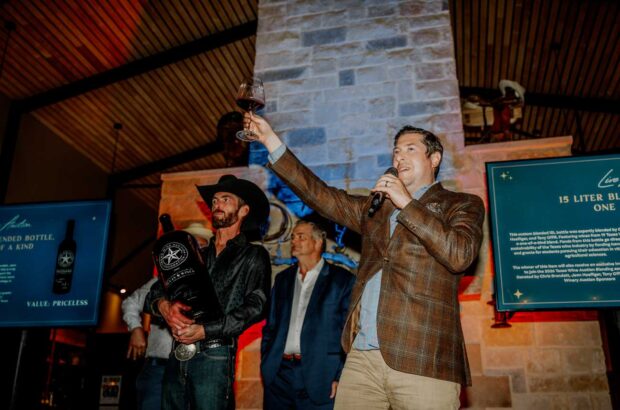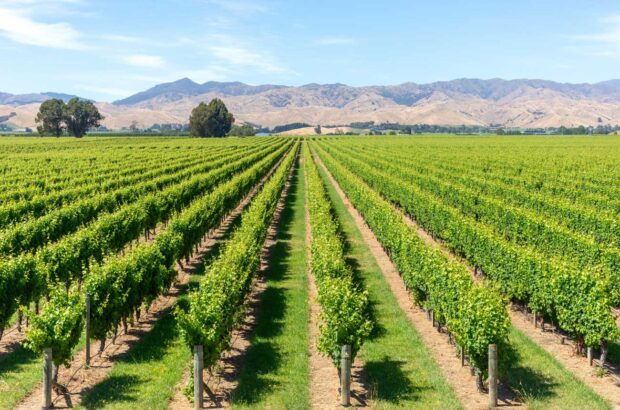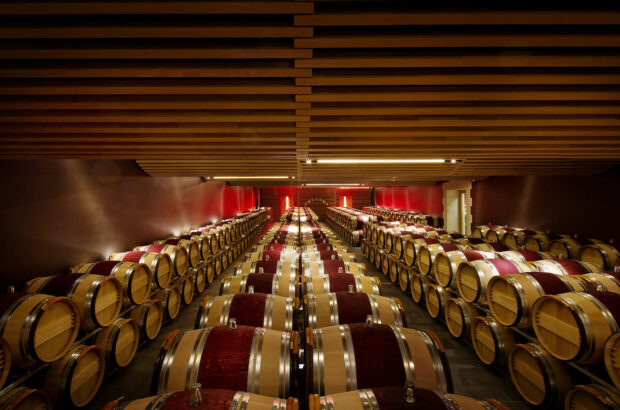While the colossal changes still required to reduce global greenhouse gas emissions must come from a governmental level, as individuals we’re not powerless to make a difference ourselves. Which wine we choose to drink may seem somewhat trivial in terms of the global challenges we face, but all of the industry’s stakeholders – including wine producers and consumers – have a role to play in tackling the climate crisis.
With this in mind, in next month’s issue of Decanter we’ll be introducing a new column, ‘The ethical drinker’ – a guide to making informed, sustainability-led decisions when buying and drinking wine, and why this matters. Each month, I’ll be talking to leading figures in wine sustainability and offering hints and tips on which wines have genuine green credentials, along with handy explainers of confusing terms around the topic, myth-busters, updates and details of new projects.
We’re starting off with this introductory overview feature, which attempts to unpick the intricacies of sustainability.
More than a buzzword
Although it’s now often used as a catch-all term for doing good for the planet, sustainability was defined in 1987 by the United Nations Brundtland Commission as ‘meeting the needs of the present without compromising the ability of future generations to meet their own needs’ – the preservation of resources, be they environmental, social or economic, for the future.
Conversations around sustainability in wine have started relatively recently in comparison to many other sectors, but as climate change has brought increasing challenges to wine-growers – including high temperatures, wildfires, severe drought, more frequent and extreme frost and hail, biodiversity loss and soil degradation – research and innovation into how the wine industry can adapt is charging forward. No one is doing everything perfectly, but many are doing at least some things right. Plenty of producers are taking steps to minimise their negative impact on the environment, create safe and valid employment, and adapt to climatic changes in order to ensure economic viability and their livelihoods for the future.
We’ve broken down sustainability in wine into the key issues and highlighted some positive nuggets of progress and change. There are still many questions to be answered and solutions to be found, and often there’s not one right way of doing things. There’s still a lot of grey among the green. Our ‘Sustainability hero’ boxes show people and companies at the forefront of developments.
Sustainability hero

Mickaël Alborghetti, EthicDrinks. Credit: EthicDrinks
This new-wave French négociant has an impressive reel of genuine sustainability credentials that have an impact on every aspect of its supply chain. A few key points are: bottling its entire range without capsules; using very lightweight bottles made from recycled glass; labelling with paper from sustainably logged forests and natural glue; avoiding all use of plastic; carbon-neutral certification. Look out for an interview with founder Mickaël Alborghetti in an upcoming column.
The environmental footprint of wine production
Viticulture is heavily reliant on natural resources, making it susceptible to both climate change and environmental degradation. Winemakers know this all too well. I’ve lost count of the number of producers who’ve told me that climate change is their biggest and most concerning challenge.
In February 2024, Spain’s Catalonia region was put under a drought emergency, which ended in June with devastating hailstorms that destroyed hundreds of hectares of vines. Wildfire season in California has reached catastrophic levels of destruction; over the last six years, tens of thousands of hectares have burned, and this year the fires have started much earlier than usual.

Cows graze on the cover crops at Frey Vineyards in Redwood Valley, northern California
Sustainability hero
Prominent Spanish producer Familia Torres has long been a key player in the sustainability narrative. It’s a founding member of International Wineries for Climate Action (alongside Jackson Family Estates in the US), a group of wineries committed to using knowledge sharing and a collaborative approach to reduce the wine industry’s carbon emissions.
Biodiversity
Diverse plant and animal populations are key for the overall health of vineyards and many producers, large and small, are actively working to increase biodiversity. Hedges, wildlife corridors, areas of uncultivated land, plant cover and polyculture crops all provide habitats for populations of insects, spiders, birds and small mammals. The greater the diversity, the more difficult it is for one pest to dominate, making biodiverse vineyards more resilient. In Burgundy, in 2022, the Climats du Vignoble de Bourgogne announced the creation of a biodiversity fund to finance and support collective projects aimed at maintaining and developing vineyard biodiversity across the region.
Soil health
Soils hold carbon, in the form of humus and the organic matter derived from plants, animals and other organisms in the soil, and maintaining healthy soils is vital for the long-term productivity of vineyards. Healthy soils remove carbon from the atmosphere, help with water management, reduce the need for fertilisers and pesticides, and assist vines in adapting to extreme weather. According to the Soil Association, the Earth’s soils contain more than three times the amount of carbon dioxide as is in the atmosphere, and degraded soils actually emit carbon dioxide, as well as methane in some instances.
One third of the world’s arable soils are said to be degraded and the equivalent of 30 football pitches of soil every minute are lost to degradation. Cover cropping, composting and reduced ploughing help maintain soil structure, leading to better resilience to floods and drought, and better carbon sequestration (capture and storage of carbon compounds from the environment). In the UK, an ongoing DEFRA-funded project is currently investigating the impact of cover cropping and mechanical weeding strategies on soil health.
With respect to vineyard management, there are a number of different approaches that help to maintain soil health. Organic grape-growing forbids the use of most chemical pesticides, herbicides and fertilisers, which helps to maintain both the health of soils and biodiversity in and around the vineyard. According to the European Commission, vineyards represent one of Europe’s most pesticide-dependent crops. This has to change if we want to continue cultivating these soils into the future. Organic farms store, on average, nearly 3.5 tonnes more soil carbon per hectare, and release less nitrous oxides, than conventional farms.
Biodynamic farming has stricter rules on chemical usage and sees the vineyard as part of a wider ecosystem, working with natural cycles and using natural preparations to promote plant and soil health. Regenerative viticulture is an even more holistic approach to vineyard management that extends many of the principles of organic and biodynamic agriculture, directly targeting the repair and regeneration of soil and associated ecosystems. Restoring the land, increasing the soil’s capacity to sequester carbon, increasing organic matter and boosting biodiversity all help to create a resilient vineyard ecosystem.
Sustainability hero

Vincent Goumard at Mas Cal Demoura in Languedoc
Winemaker-owner Vincent Goumard truly understands what a vineyard as an ecosystem means. He contends that the only way to fully grasp this idea is to see it in action, to physically be in the vineyard all the time and observe the minute interactions. He says that practising biodynamic viticulture has been enormously beneficial in times of extreme weather. The complex soil structure that has been enhanced by cover cropping allows torrential rainfall to be absorbed more effectively, while neighbouring parcels with bare soils are flooded and subject to erosion.
Water
Water is clearly a critical resource in viticulture, so wine-growers the world over are adopting more sustainable water management practices, including the use of more efficient irrigation techniques where authorised, rainwater capture and grey water re-use (recycling run-off from winery activities). Better soil management, the use of appropriate trellising and training systems, better canopy management and the development and planting of drought-resistant grape varieties are also having a significant impact.
Estimates suggest that in California, producing a glass of wine can consume as much as 60 litres of water. Frey Vineyards in Redwood Valley, the first certified-organic US winery, uses a system that contains billions of earthworms to filter its winery run-off for reuse in the vineyards.
Sustainability hero
Portugal-based Symington Family Estates is an industry leader when it comes to sustainability. Aside from its long list of green initiatives, what sets this producer apart is its commitment to transparency. ‘We’re on a journey,’ says Rob Symington, a director at the estate who oversees communications, sustainability, people and culture, and one of the most knowledgeable and engaged people I’ve spoken to about sustainability in wine. ‘We’re definitely not without fault, and any company that says that it is, is greenwashing.’ I’ll be exploring Symington in more depth in a future column.
Emissions reduction
At the current rate and under current policies, forecasts predict that the planet will reach 3°C of warming by the end of the century – twice the amount of the 2015 Paris Agreement’s most ambitious target; greenhouse gas emissions must be cut by 42% by 2030 to limit global warming to that target of 1.5°C above pre-industrial levels.
Many wine producers cite reducing carbon emissions as the key focus in their sustainability strategy. Be wary of unsubstantiated claims of carbon neutrality, though; carbon neutrality can only really be confirmed through lengthy and complicated audits carried out by organisations such as EcoAct, which certified Champagne Drappier in 2016.
Packaging is one of the wine industry’s biggest sources of emissions, in particular the production of glass bottles and their transport around the globe. Reducing bottle weight is a surefire way to cut emissions and should be part of every producer’s sustainability agenda. The heavy glass bottles once intended to signify a better-quality wine have now become a luxury the world can’t afford. In 2023, the Sustainable Wine Roundtable (SWR) launched the Bottle Weight Accord, whereby nine major retailers around the world committed to reducing their average bottle weight to less than 420g by the end of 2026 (an average bottle weighs 550g). Sparkling wine is a little more difficult as the glass must be thick enough to withstand the pressure inside, but last year Champagne Telmont reduced the weight of its bottle from Champagne’s standard 835g to 800g.

Waitrose capsule-less Loved & Found range. Credit: Waitrose
Capsules – which nowadays are above all an aesthetic choice – are often difficult or impossible to recycle. Retailer Naked Wines is making a growing number of its wines capsule-less, and UK supermarket Waitrose has removed all capsules from its Loved & Found range. Widespread removal of capsules would be a big win for the industry in terms of reducing waste.
Sustainability hero

Candour Wine lightweight aluminium cans. Credit: Candour Wine
Aluminium cans are lightweight and can effectively be recycled infinitely. And their use is increasing, with high-quality wines now widely available in can format. Candour Wine has several great examples – I particularly like the rosé, which is made by biodynamic producer Can Sumoi in Spain’s Penedès region.
Energy use
Reducing energy consumption and transitioning to renewable energy sources such as solar panels, wind turbines and electric vehicles is crucial for cutting carbon emissions. Winery roofs are increasingly being covered in solar panels and reflective paint in order to reduce cooling costs; energy-efficient lighting is being installed and electric vehicles are being used to carry out tasks in the winery. In Australia, since launching its environmental management program in 2009, Tyrrell’s Wines in the Hunter Valley, has reduced its total greenhouse gas emissions from fuel and electricity usage by 65%.
Sustainability hero

Benjamin Bridge vines in the Gaspereau valley, Novia Scotia
When it comes to social sustainability, B Corp-certified Canadian winery Benjamin Bridge, located on the north coast of Nova Scotia, has some of the most impressive and genuinely meaningful initiatives I’ve seen so far. Among the many projects it has implemented are a four day working week and employee volunteer-work opportunities. And since 2021, it has been a formal ally of Glooscap First Nation, an indigenous community on whose territory the vines are farmed and stewarded.
Social programs
How does the social factor come into play? Ethical employment practices, quality of life, food security and fair working conditions: basic expectations for any wine company, surely. Shockingly, it’s not always the case. As recently as 2023, human trafficking claims were investigated in the Champagne region as 52 undocumented grape pickers were discovered lodging in squalid, unsanitary conditions.
B Corp certification measures a company’s environmental and social impact, as well as its transparency and accountability, against strict criteria. Domaine Bousquet in Argentina is B Corp-certified and has committed to a number of employment objectives, including providing wages above the minimum level and investing skills development and education. In Spain, Cava producer Vallformosa, also B Corp-certified, has collaborated with a number of inclusion projects, notably for people with disabilities and those with mental health conditions.
Gaining B Corp certification is an expensive process, so it’s typically restricted to bigger companies. It also requires a huge amount of work, reflection and change for the better. In 2016, biodynamic-certified Château Maris in Languedoc became Europe’s first B Corp-certified winery, and while it scored well in the environmental assessment, it did less well when it came to employment and community. ‘We just didn’t think about it at that time,’ says Hannah Egea, corporate social responsibility manager at the domaine. ‘B Corp really makes you look at the company in a different way.’
Listen to this
Sustainable Wine Roundtable’s podcast
If you absorb info through audio and would like to really get to grips with sustainability in wine, then check out the Sustainable Wine podcast.
Certification schemes
There is much debate over the perception of sustainability certifications. With so many wine sustainability standards now in circulation (about 70 have been identified by SWR), many of which are country- or region-specific and have varying criteria and strictness, it has become difficult to gauge whether they have any real meaning, which feeds into consumer scepticism and suspicions of greenwashing (see below) – many are seen as failing to provide sufficient scope or proper criteria to be considered fully credible or beneficial.
In France, for example, the Haute Valeur Environnementale (HVE) certification is widely adopted, yet there is discussion over the scheme’s eco legitimacy, notably due to its continued authorisation of chemical pesticides.
Ultimately, though, certification schemes serve to bring sustainability issues – both social and environmental – into the mainstream. SWR has created a global reference framework for sustainability in wine, aiming to benchmark all of the various wine sustainability certifications against each other.
Greenwashing
According to the European Commission, 53% of green claims (on all types of products within the EU) give vague, misleading or unfounded information. In order to protect consumers, the EU is working on a proposal for a new regulatory framework to ensure that such information on labels is ‘reliable, comparable and verifiable’. This will require companies to use the latest scientific evidence to substantiate their claims.
Transparency is key here: if companies are open about the steps they’re taking to improve, and where there might be gaps in their efforts, it gives credibility to their claims and can only increase consumer confidence.
Collective effort

La Santissima di Gussago in the east of the Franciacorta wine region, Lombardy. Credit: Eyestravelling / Shutterstock
Italy’s Franciacorta consorzio has been something of a pioneer in its dedication to driving sustainability to the forefront of its producer members’ minds. From developing a tool for wineries that measures carbon emissions across the wine production chain to leading studies into vineyard biodiversity, the body has overseen many projects that give its producers the tools they need to farm and produce wine as sustainably as possible; as it stands, two-thirds of Franciacorta’s vineyard area is certified organic.
Sipping to save the planet
Given that millions of bottles of wine are bought and consumed around the world every year, even small changes made by producers, coupled with more informed choices made by consumers, can have significant beneficial impacts on both the health of the planet and the long-term sustainability of the global wine industry.
This is very much in our interest, as both wine lovers and human beings.












